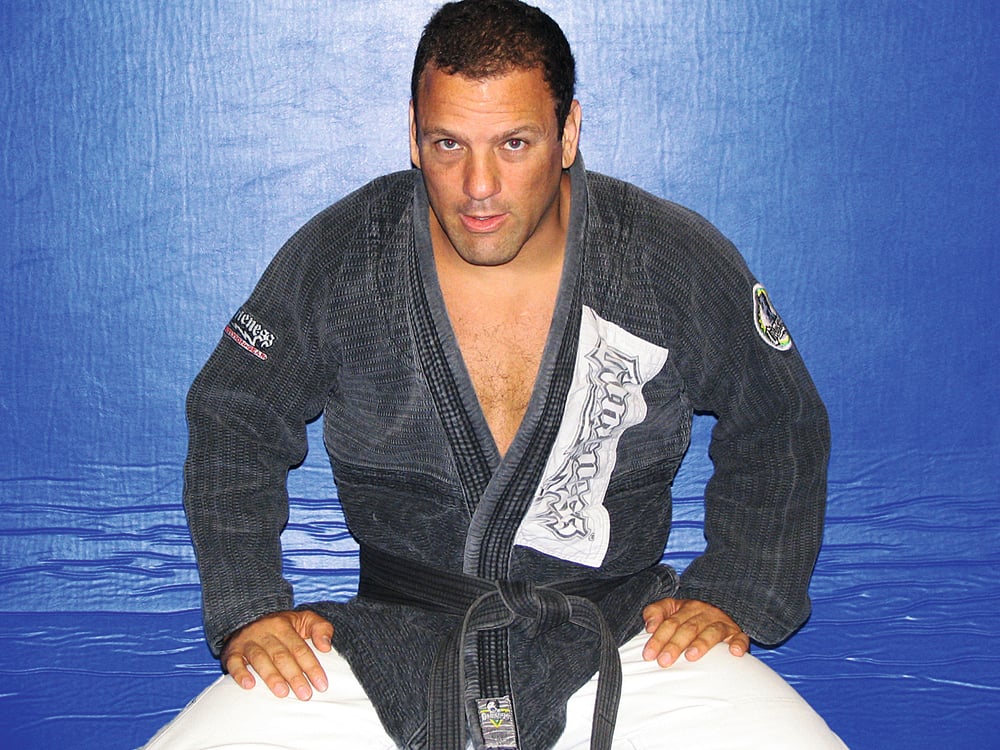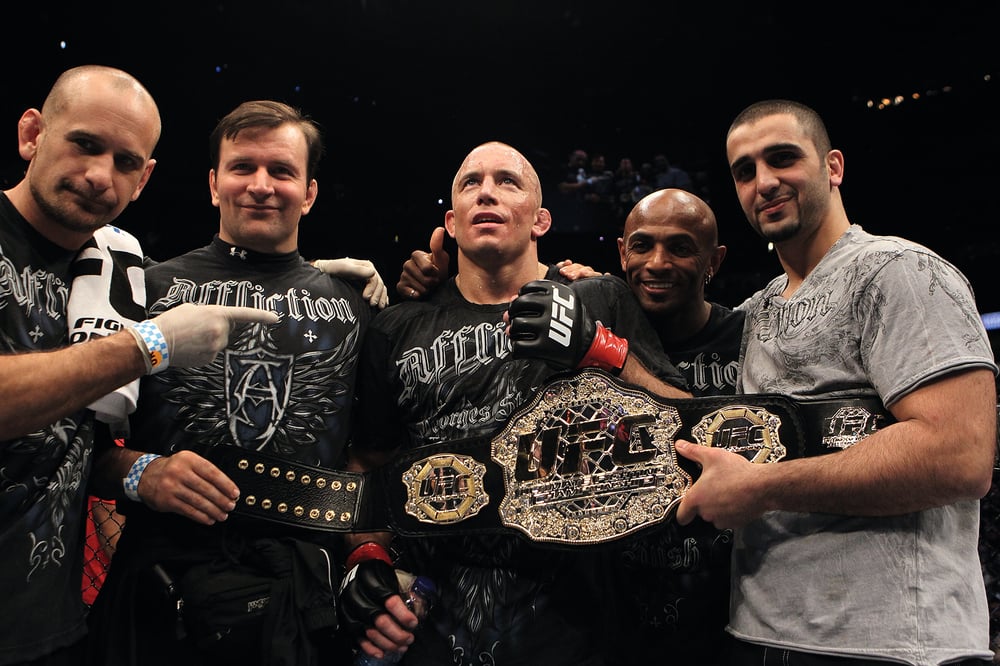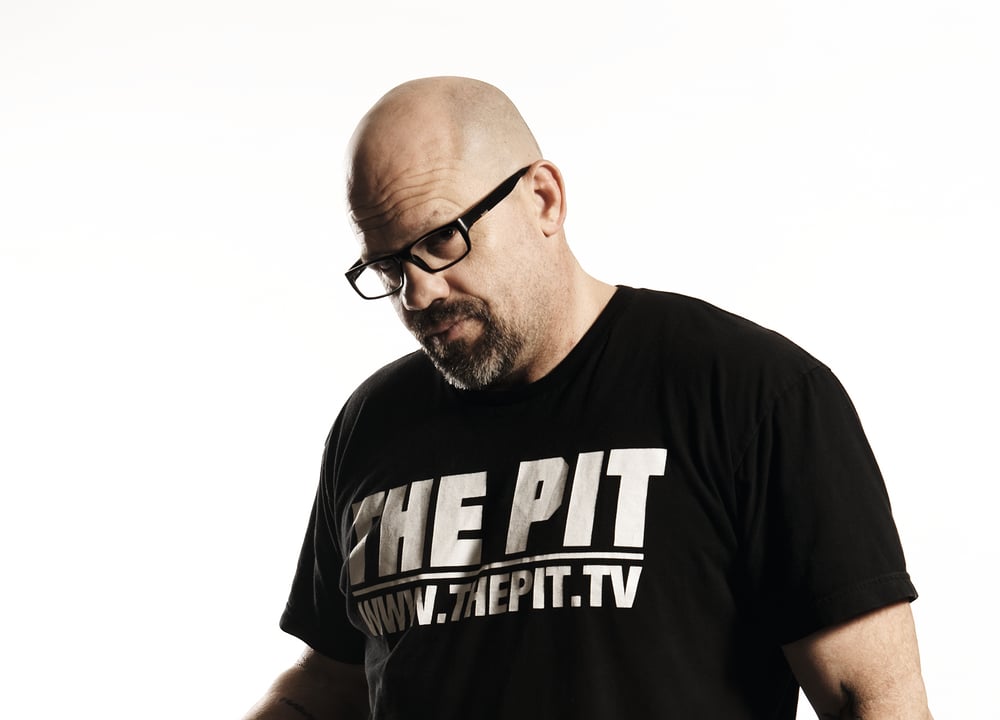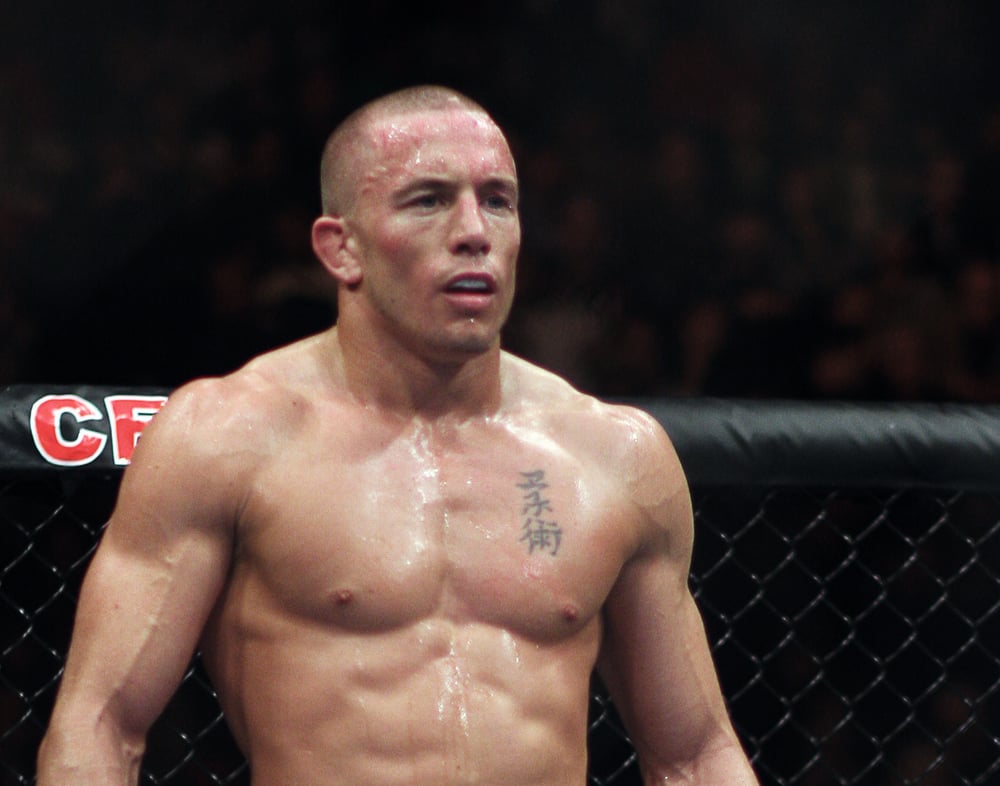
Issue 073
March 2011
Meet the gurus of 21st century combat sports: the trainers who use spirituality and philosophy to breed champions. May their force be with you
GREG JACKSON
Founder, Jackson’s Martial Arts, Albuquerque, New Mexico
Apprentices: GSP, Rashad Evans, Jon Jones,
Donald Cerrone, Carlos Condit (amongst many others)
The bottom line is: people don’t refer to you as ‘Yoda’ unless you’ve got something important to say. Of course, three-time Fighters Only World MMA Awards winner Greg Jackson has no problem with that. Widely regarded as one of the top trainers in the sport today, Jackson is lauded as a master strategist, and his handling of fighters between rounds is second to none. But the gaidojutsu founder and author of two best-selling instructional books believes his success can be replicated by others. For Jackson, it all comes down to the bond developed between trainer and fighter.
“Training fighters is a very complicated process,” Jackson says. “I always watch those Rocky movies when they just kind of start out, and they have all these crazy tricks like chasing chickens and God knows what else. That’s cool, and that’s a very important part of keeping a fighter motivated, but there are also much more fundamental strategies in training fighters and running a fight team. What it really comes down to is the initial structure that you put in.”
Jackson believes it’s important for the trainer to establish structure in the gym so that athletes understand who’s in charge. However, he doesn’t believe the relationship should be one-sided. “You should show your fighters that you care about them and you know what you’re doing,” Jackson says. “That’s really important. The way I show that to my fighters, and I always get harassed for this, I actually tell them you don’t have to pay me any money. If you want to pay me money, that’s fine. If you don’t want to pay me money, that’s fine. I’m not in it for the money. I’m here for you, for you to go all the way, to make you everything I can. Now that’s crazy to most people, and it’s hard to run an organization like that, but that’s one of the methods I’ve used to show the fighters that I’m not about me. I’m 100% about making these guys the best they can be.”
And Jackson’s track record of success is undeniable. UFC superstars such as Rashad Evans, Jon Jones, Nate Marquardt, Diego Sanchez and Georges St Pierre, among countless others, have enlisted Jackson’s help. While the trainer’s technical method is admirable, it’s his psychological approach that defines the trainer-fighter relationship. “You have to be organized,” Jackson says. “You can’t just come out and say, ‘OK, today I think we should kickbox. Yeah, kickboxing sounds great. Tomorrow we need to grapple because that’s part of the fight, too.’ You need to know what you’re doing, and you need to be able to talk about your plan. The way I come at my fighters is always with respect, and direction is going to fuel that bond. When I have a problem with my fighters, you have to remember the bond that holds you together with them. Fighters are a little bit different. If you come screaming at their face, even if they accept what you’re saying, they’re still mad about it. They’re not listening to you, and they’re emotional. If you’re yelling at them and getting on them, they’re emotional. You don’t want emotional. You want them to see the logic of why they want to do this.”

SHAWN TOMPKINS
TapouT Training Center Pro Team Instructor
Apprentices: Sam Stout, Mark Hominick, Vitor Belfort, Wanderlei Silva
Canadian-born trainer Shawn Tompkins has had mitts on his hands for as long as he can remember. “My dad was a pro boxer growing up in Ireland, actually, so when I grew up, a lot of the times when I was in trouble as a kid or had too much energy, my dad would have me doing boxing drills with him,” Tompkins says. “I grew up that way. Honestly, as a kid I was a gym rat. I would sit in the gym and watch people train, even at 12 and 13 years old. I’d sit in a boxing gym and watch the coaches work all day long, to the point where some of the coaches were like, ‘Hey, kid, you gotta go.’”
Using the knowledge he’d gathered from his dad, as well as ten years of study in shotokan karate, Tompkins started coaching at just 16 years old. “I opened up my first gym in Canada when I was 18,” Tompkins says. “It’s still there. Mark Hominick, Chris Horodecki and Sam Stout run training centers for Team Tompkins. Those three have all been with me for about ten, 11 years now. It’s just been a work in progress, and obviously it’s a passion.”
It’s that lengthy commitment that Tompkins believes is the key to success for all fighters. While the Team Tompkins head is currently based in Las Vegas, home to several high-level fight camps, Tompkins believes fighters are best served by staying with one head instructor rather than through the gym-hopping that has become popular in recent years. “If you look around at the fighters who are most successful, they’ve done what they’ve done by staying in one place,” explains Tompkins. “When you work with the same coaches on a daily basis, they know the most about you. They know how to push you, how to motivate you and what you need to improve on. It’s my job as a coach to bring them whatever coaches they need, to improve in those areas.”
A striking specialist, Tompkins also recently went back to his roots and signed on as head instructor to professional boxer Ramon Montano. It’s that love for all striking arts that Tompkins believes fighters and coaches need in order to mine the best techniques from each craft. “I watch all fighting,” he says. “I don’t believe that one is better than the other. I’ve always been a huge fan of boxing. A lot of the things, I think, in MMA that have been bringing my fighters ahead in the last year or so have been the aspects I’ve been bringing from the boxing world or the kickboxing world or Brazilian jiu-jitsu world. I still always trail back to those other sides of it.”

CESAR GRACIE
Founder, Cesar Gracie Academy, Pleasant Hill, California
Apprentices: The Diaz Brothers,
Jake Shields, Gilbert Melendez
When you’re born with the last name Gracie, there’s little question as to what direction your career path will likely take. Often referred to as the “First Family of MMA,” the Gracies gave birth to not only their own brand of Brazilian jiu-jitsu, but also to the Ultimate Fighting Championship. Cesar Gracie, grandson of the late Carlos Gracie, always knew he’d help keep his family’s legacy alive. “I didn’t know if I would be successful or not, but it’s a family tradition, so I wanted to continue in that,” Gracie says. While his own mixed martial arts career consisted of just one fight, as a trainer Gracie has established one of the most talented fight teams in the world. Based on two tenets – fundamentals and hard work – Gracie has helped propel fighters such as Nick Diaz, Gilbert Melendez and Jake Shields to world titles. “We have our own philosophy of what’s going to be successful,” Gracie says. “I’m a firm believer that our grappling is some of the best in the world. I believe the grappling is so important. Then I also have the guys train in proper stand-up techniques. Obviously, there are things I think are going to work, and that’s where I take it.”
But Gracie doesn’t just train fighters. He also owns several academies that are open to the public, and he still takes pride in teaching the original virtues of Gracie jiu-jitsu. “MMA is a tough sport,” Gracie said. “You have to be careful. As a career, there’s no retirement plan. There is no 401K. Yes, you can make it, but the vast majority of people don’t. My principle goal is for the common person to learn jiu-jitsu. I think there are so many benefits to it. It changes lives. People get into a healthier lifestyle from where they were at before with training and diet. That’s always exciting. I don’t think I’ll ever get sick of that.”
Gracie’s passion for his family’s art is so deep that he insists he would continue to teach jiu-jitsu even if MMA were to suddenly not exist. “You learn respect,” Gracie says. “You’re meeting different people from all different backgrounds, and it opens your mind. You can become friends with individuals you normally wouldn’t meet in your little circle of people you hang out with. I just think jiu-jitsu is so beneficial in so many different ways. I love doing it. I’ll always do it. I would even be doing jiu-jitsu if there was no fighting. I did it before. If MMA was suddenly banned, I would just go back to what I do.”

JOHN DANAHER
BJJ Philosopher
Apprentices: Georges St Pierre
Described by GSP as “the smartest man I’ve ever met”, grappling connoisseur Danaher is also so elusive that fellow ace BJJ coach Dave Camarillo dubbed him “sasquatch” after the mythical monster. There was a sighting of the New Zealander when he stole the show on this year’s TUF. Otherwise, he rarely courts the limelight, preferring to spend so much time on the mat at Renzo Gracie Jiu-Jitsu in New York that he famously wore a rash guard to Matt Serra’s wedding.
The holder of a Masters Degree in Philosophy from Columbia University is convinced that his academic background meshes beautifully with the grappling arts. “Philosophy literally means love of wisdom. The study of jiu-jitsu gives one a particular type of wisdom – wisdom with regards to the workings, mechanics, weaknesses and strengths of the human body and the strategy and tactics by which one person or group of people can gain competitive advantage over another. The study of philosophy gave me the greatest skill that any man can have: the skill of critical thinking that enables a man to gain knowledge through rational enquiry, to look upon the world through the eyes of a problem solver. Jiu-jitsu is, more than anything else, a course in problem solving: how to control and submit a resisting opponent who is attempting to do the same to you. As such, it shares with the study of philosophy the ideal of rational solutions to difficult problems. They differ only in subject matter.”
Danaher elaborates further on the philosophical aspect of BJJ, its the spiritual side or lack thereof of the ‘force’. “I try hard to avoid talk of spiritualism, both in martial arts and life in general. I see jiu-jitsu as a purely mechanical enterprise. All of the answers to all of the problems can be adequately addressed in physical terms, without recourse to ‘spirit.’ Jiu-jitsu is a biomechanical art governed by strategy and tactics derived from practical experience. There is no need to make reference to occult forces or vague terms whose meaning is unclear. Philosophy on the other hand, is a big part of what I teach. I believe that a man deeply committed to jiu-jitsu must stand for something. Jiu-jitsu gives a man a set of principles that can govern his overall approach to life. If jiu-jitsu were only seen as a competition to see who can tap who it would never arise above the level of a child’s game. It must be something deeper than that. Your approach to jiu-jitsu and your overall world-view must mesh together, otherwise it is nothing more than a recreation that you play with once or twice a week.”
One of the pillars of Danaher’s philosophy is pre-emption. “As beginners we learn to defend our opponent’s various attacks upon us. Typically we do not identify the attack until it is actually performed upon us and then we struggle to escape. The path of expertise largely consists in learning to identify dangers before they arise. What distinguishes the world champions is the seemingly invisible movement patterns and skills they employ to shut down their opponent’s offense in ways that the careless observer does not even see or comprehend. The best players are above all, masters of the subtleties of gripping, for grip is the basis of control and at the elite level, control is everything.”
So why the love of teaching? “I greatly enjoy watching the joy, skill and confidence people gain as they immerse themselves in the study of grappling. Deep study of all the grappling arts adds greatly to a man’s worth. It teaches him fortitude, perseverance, humility, self-reliance, problem solving under stress, among many other invaluable life skills and character traits. What greater reward could I ask for than to help bring someone towards this?” Does Danaher consider BJJ the most important tool in the MMA fighter’s toolbelt? “Any art that has a strong competition-based tradition can form an effective base for an athlete’s training. What counts is his ability to add to that base from the other relevant arts over time so that when he steps into the cage he has no obvious weaknesses that an opponent can exploit.”

JOHN HACKLEMAN
Founder, The Pit, Arroyo Grande, California
Apprentices: Chuck Liddell, Court McGee
Best known as the career-long trainer for UFC Hall of Famer Chuck Liddell, John Hackleman is the founder of the legendary lo-fi California-based academy known as The Pit. A lifelong student of mixed martial arts with training in shotokan karate, kajukenbo and judo, Hackleman developed his own fighting style, which he dubbed Hawaiian Kempo. For Hackleman, the guiding principle is simple: If it ain’t broke, don’t fix it. “In the old days, they’d teach you that everything has to be precise, that your hand has to be just this way,” he says. “Then I realized that if you hit someone really hard or hit someone just right, it doesn’t really matter if your hand is at a different angle. If it knocks the guy out, it works. Basically, a punch that knocks someone out works, no matter how sloppy it is. Whether it’s Fedor Emelianenko’s sloppy punch or a precise straight right hand like Chuck’s, they’ll both do the job.”
As such, Hackleman has embraced a style that lets fighters feel comfortable while in the cage. “When fighters throw hooks, some guys turn their hands inward,” he says. “Other guys turn their palm downward when they throw a hook. Some guys even hyper-extend it, and their palm is almost facing outward when they throw a hook. That kind of stuff, I just let whatever happens, happen – however it’s more natural for them. There are some simple rules they have to abide by, like when you throw a left hook, keep your right hand up. If you don’t, you’re just going to get knocked out, no matter what. Stuff like that. Other than that, it’s whatever works well for them.”
While Hackleman guides just a handful of professional fighters today, he does oversee more than 200 students at his academy, which he also refers to as a part social club. Hackleman’s students range from ages three to 85, and he says he requires them all to abide by a simple code, one that even his fighters must follow. “I’m not going to shove morals down anyone’s throat,” he says. “But I’ll kick a guy off of my team or out of my school if I find out he gets in fights outside or I find out he gets arrested. I even did that to my own kid. My son got into a barfight. He’s a bouncer, but I think he went kind of above and beyond bouncing the guy, so I ended up suspending him for six months.”
Hackleman says his philosophy may not always be palatable to all, but it makes sense in the real world. “I teach the kids not to fight,” he says. “It doesn’t matter if they call your mom a fat, ugly whore. You walk away. Some of the parents don’t like that language, but whatever. But the second someone lays a hand on you, I tell them, ‘Don’t hesitate to start pounding them real hard and real fast because if you don’t, they’ll do that to you.’ Sometimes the teachers and the principals don’t like that, but if it was their kid getting bullied or beat up, they wouldn’t mind it. That’s it. Let people say what they want to, but the second someone tries to take your lunch money, just start pounding them and punching them in the face, and keep punching them until one of the teachers pulls you off. It’s kind of a hard philosophy. Don’t ever be a bully, but don’t be bullied, either.”
MURILO BUSTAMENTE
Founder Brazilian Top Team, Rio de Janeiro, Brazil
Apprentices: The Nogueira Brothers, Anderson Silva, Vitor Belfort
As one of the founders of the legendary Brazilian Top Team, Murilo Bustamante was once considered to be a revolutionary strategist who understood the need to cross-train in a variety of disciplines in order to succeed in MMA. However, now that Bustamante’s glory days as a UFC champion and nine-time Pride veteran are over, he’s more interested in assistance than innovation. “I have been teaching the past 25 years,” Bustamante says. “I’ve been competing and teaching my whole life. It’s natural for me. If not in the ring or the Octagon, then the best thing is to be coaching someone inside. The best feeling in the world is winning a fight. I think the second best is seeing your student win a fight. To help people become a champion, or to help people become a better man, a better human being – to teach not only martial arts, but also try to pass something on to young guys and to help people become better, more generous, a better human being in general, I like to accomplish that. It’s something that makes me really happy to be a coach.”
At 44 years old, Bustamante has seen MMA rise from nothing to the multi-billion dollar sport it is today. But he believes there’s some tradition and responsibility that needs to accompany training in the sport. “I think MMA has become a big business,” he says. “I think it’s important to keep the tradition. It’s very important to me. I practice judo and jiu-jitsu, as well as boxing, but I think the tradition of martial arts is the key to it. You can reach people in the best way. Martial arts is a sport, but it’s also a philosophy that is to be followed. The coach is not only a coach. The coach needs to be a master. He needs to pass something on to the students.”
Bustamante says much of today’s training is focused simply on earning results in a fight rather than improving the sport’s participants as a whole. “It’s not about if you can hurt someone in the ring,” he says. “To fight is a challenge between skills. It’s nothing personal. I’ve been trying to teach something substantial to my students – not only how to apply a perfect armbar. It’s like you put a gun in the hand of someone and teach them how to pull the trigger. You have to teach why and how they have to use the gun. Martial arts is not just something to watch and have fun and scream. There is a great deal of respect that must be honored, as well.”
MMA STAR WARS
Which combat sports heroes match the cast of sci-fi’s greatest movies?
Luke Skywalker: Georges St Pierre
Blue-eyed, with a sense of justice and dazzling skills
Han Solo: KJ Noons
Smooth, effective in a crisis and probably up to something
Princess Leia: Gina Carrano
Equally at home in a flowing robe or wielding a lightsabre (well, 4oz gloves)
C3PO: Nick Ring
Chatty, sensible, would have excellent chemistry with...
R2D2: José Aldo
Spunky, worldly-wise, handy in a crisis
Chewbacca: Forrest Griffin
Loyal and hairy: still waters running deep
Obi-Wan Kenobi:
Randy Couture
Calmly effective and wise statesman of MMA
Darth Vader: Fedor Emelianenko
Ruthless and adept, ploughs his own furrow
Jar Jar Binks: ‘Mayhem’ Miller
Always ready with a quip or anti-bullying message, prone to inviting disaster
Boba Fett: Carlos Condit
Cult hero who gets the job done













